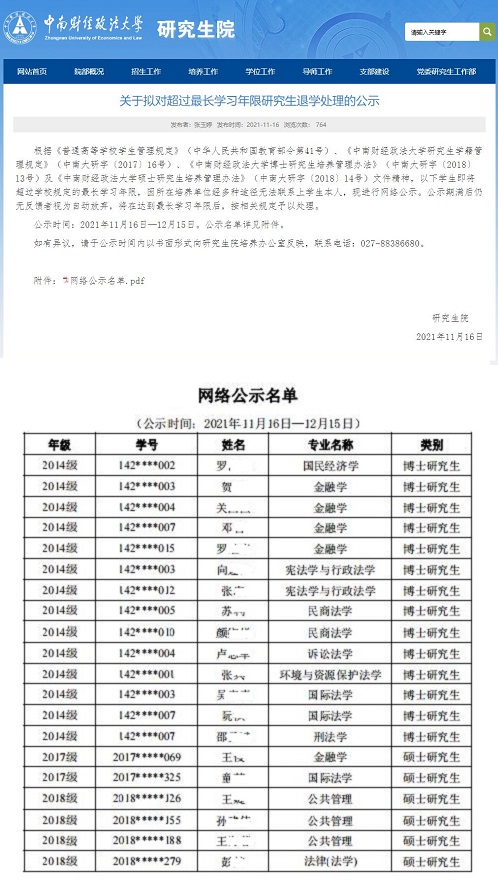
情态动词有can,may,must,have to,shall,will,dare,need,ought to等。情态动词无人称和数的变化;不能单独使用,必须与其后的动词原形构成谓语。
1英语情态动词的基本用法归纳
一、 can, could
1) 表示能力(体力、知识、技能)。
Can you lift this heavy box?(体力)
Mary can speak three languages.(知识)
Can you skate?(技能)
此时可用be able to代替。Can只有一般现在时和一般过去式;而be able to则有更多的时态。
I’ll not be able to come this afternoon.
当表示“经过努力才得以做成功某事”时应用be able to,不能用Can。如:
He was able to go to the party yesterday evening in spite of the heavy rain.
2) 表示请求和允许。
-----Can I go now?
----- Yes, you can. / No, you can’t.
此时可与may互换。在疑问句中还可用could,might代替,不是过去式,只是语气更委婉,不能用于肯定句和答语中。
---- Could I come to see you tomorrow?
---- Yes, you can. ( No, I’m afraid not. )
3) 表示客观可能性(客观原因形成的能力)。
They’ve changed the timetable, so we can go by bus instead.
This hall can hold 500 people at least.
4) 表示推测(惊讶、怀疑、不相信的态度),用于疑问句、否定句和感叹句中。
Can this be true?
This can’t be done by him.
How can this be true?
二、 may, might
1) 表示请求和允许。might比 may语气更委婉,而不是过去式。否定回答时可用can’t或mustn’t,表示“不可以,禁止”。
----Might/ May I smoke in this room?
---- No, you mustn’t.
---- May/Might I take this book out of the room?
---- Yes, you can. (No, you can’t / mustn’t. )
用May I...?征徇对方许可时比较正式和客气,而用Can I...?在口语中更常见。
2)用于祈使句,表示祝愿。
May you succeed!
3) 表示推测、可能性(不用于疑问句)。
might不是过去式,它所表示的可能性比may小。
1.He may /might be very busy now.
2.Your mother may /might not know the truth.
三、 must, have to
1) 表示必须、必要。
You must come in time.
在回答引出的问句时,如果是否定的,不能用mustn’t(禁止,不准),而用needn’t, don’t have to(不必).
---- Must we hand in our exercise books today?
---- Yes, you must.
---- No, you don’t have to / you needn’t.
2) must是说话人的主观看法, 而have to则强调客观需要。Must只有一般现在时, have to 有更多的时态形式。
1. he play isn’t interesting, I really must go now.
2. I had to work when I was your age.
3) 表示推测、可能性(只用于肯定的陈述句)
1. You’re Tom’s good friend, so you must know what he likes best.
2. Your mother must be waiting for you now.
四、 dare, need
1) dare作情态动词用时, 常用于疑问句、否定句和条件从句中, 过去式形式为dared。
1. How dare you say I’m unfair?
2. He daren’t speak English before such a crowd, dare he?
3. If we dared not go there that day, we couldn’t get the beautiful flowers.
2) need 作情态动词用时, 常用于疑问句、否定句。在肯定句中一般用must, have to, ought to, should代替。
1.You needn’t come so early.
2. ---- Need I finish the work today?
---- Yes, you must. / No, you needn’t.
3) dare和 need作实义动词用时, 有人称、时态和数的变化。在肯定句中,dare后面常接带to的不定式。在疑问句和否定句中,dare后面可接带to或不带to的不定式。而need后面只能接带to的不定式。
1. I dare to swim across this river.
2. He doesn’t dare (to) answer.
3. He needs to finish his homework today.
五、 shall, should
1) shall 用于第一人称,征求对方的意见。
What shall we do this evening?
2) shall 用于第二、三人称,表示说话人给对方的命令、警告、允诺或威胁。
1. You shall fail if you don’t work hard.(警告)
2. He shall have the book when I finish it.(允诺)
3. He shall be punished.(威胁)
六、 will, would
1) 表示请求、建议等,would更委婉。
Will / Would you pass me the ball, please?
2) 表示意志、愿望和决心。
1. I will never do that again.
2. They asked him if he would go abroad.
3) would表示过去反复发生的动作或某种倾向。would表示过去习惯时比used to正式,且没有“现已无此习惯”的含义。
1. During the vacation, he would visit me every other day.
2. The wound would not heal.
4) 表示估计和猜想。
It would be about ten o’clock when she left home.
七、 should, ought to
1) should, ought to表示“应该”,ought to表示义务或责任,比should语气重。
1. I should help her because she is in trouble.
2. You ought to take care of the baby.
2) 表示劝告、建议和命令。should, ought to可通用,但在疑问句中常用should。
1. You should / ought to go to class right away.
2. Should I open the window?
3) 表示推测
should , ought to (客观推测), must(主观推测)。
1.He must be home by now. (断定他已到家)
2.He ought to/should be home by now.(不太肯定)
3. This is where the oil must be.(直爽)
4. This is where the oil ought to/should be.(含蓄)
八、 情态动词+不定式完成式(have done)
1) can / could + have done在肯定句中表示“本来可以做而实际上能做某事”,是虚拟语气;在疑问句或否定句中表示对过去行为的怀疑或不肯定, 表示推测。
1. You could have done better, but you didn’t try your best. (虚拟语气)
2. He can’t have been to that town.(推测)
3. Can he have got the book?(推测)
2) may / might +不定式完成式(have done)
表示对过去行为的推测。不能用于疑问句中,没有虚拟语气的用法。Might所表示的可能性比may小。
1. He may not have finished the work .
2. If we had taken the other road, we might have arrived earlier.
3)must +不定式完成式(have done)
用于肯定句中,表示对过去行为的推测。意为“一定、想必”。其疑问、否定形式用can,can’t代替。参看1) can / could + have done表示推测。
1. You must have seen the film Titanic.
2. He must have been to Shanghai.
4)should +不定式完成式(have done)
用于肯定句中,表示对过去行为的推测。
He should have finished the work by now。
表示“本应该做而实际上没有做某事”,其否定式表示某种行为本不该发生却发生了。可以与ought to +不定式完成式(have done)互换。
1. You ought to / should have helped him. (but you didn’t.)
2. She shouldn’t have taken away my measuring tape, for I wanted to use it.
5) needn’t +不定式完成式(have done)
表示“本来不必做而实际上做了某事”。
You needn’t have watered the flowers, for it is going to rain.
6) will +不定式完成式(have done)
主要用于第二、三人称,表示对已完成的动作或事态的推测。
He will have arrived by now.
2情态动词的特点是什么
情态动词无人称和数的变化,情态动词后面跟的动词须用原形,否定式构成是在情态动词后面加 "not"。个别情态动词有现在式和过去式两种形式,过去式用来表达更加客气,委婉的语气,时态性不强,可用于过去,现在或将来。情态动词属非及物动词,故没有被动语态。
He could be here soon. 他很快就来。
We can't carry the heavy box. 我们搬不动那箱子。
I'm sorry I can't help you. 对不起,我帮不上你。
基本助动词与情态助动词最主要的区别之一是:基本助动词本身没有词义,而情态助动词则有自己的词义,能表示说话人对有关动作或状态的看法,或表示主观设想:
What have you been doing since? (构成完成进行体,本身无词义)
你一直在干什么?
I am afraid I must be going. (一定要)
恐怕我必须走了
You may have read some account of the matter. (或许已经)
你可能已经读过关于这件事的一些报道
除此之外,情态助动词还有如下词法和句法特征:
除ought和used和have to以外,其他情态动词后面只能接不带to的不定式。如果我们把ought to和used to看做是固定词组的话,那么,所有情态动词无一例外地只能接不带to的不定式:
We used to grow beautiful roses.我们过去常常种这种漂亮的玫瑰花
I asked if he would come and repair my television set.我问他是否来修我的电视机
情态助动词在限定动词词组总是位居第一:
They need not have been punished so severely.
他们不需要如此严厉的惩罚
情态助动词用于第三人称单数现在式的时候,没有词形变化,即其词尾无-s形式:
She dare not say what she thinks.
她不敢说她是怎么想的
情态动词没有非限定形式,即没有不定式和分词形式,也没有相应的动名词:
Still,she needn't have run away.
不过,她不必跑了
情态助动词的“时”的形式并不是时间区别的主要标志。在不少场合,情态助动词的现在时和过去时形式都可以表示现在、过去或将来时间:
Would you mind very much if I ask you to do something?
你会很介意如果我让你做什么?
She told him he ought not to have done it.
她告诉他他不应该这样做
情态助动词之间是相互排斥的,即在一个限定动
词词组中只能出现一个情态助动词,但有时却可以与have和be基本助动词连用:
You should have washed the wound.
你应该已经洗好了伤口
Well,you shouldn't be reading a novel.
嗯,你不应该读一本小说
情态动词must一般疑问句否定回答要用needn't而不是mustn't。
Must I read books every day、我必须每天读书
No,you needn't . 不,你不必












